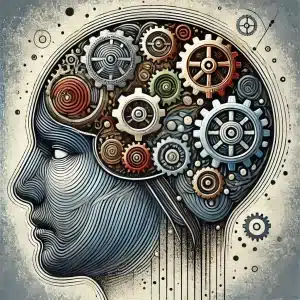Organisational change is no longer a one-off event with a neat “before and after” picture – it’s a continuous journey. As an experienced HR leader and coach, I’ve learned that org design and organisation development(often grouped as OD&D) are twin tracks on this journey. We in HR have often been working on these areas without even realising it, whether we’re tweaking a team structure or nurturing a culture shift. In this article, I’ll clarify what org design and organisational development mean, how they differ yet work in parallel, and why today’s business environment demands an ongoing, integrated approach.
Organisation Design vs. Development – What’s the Difference?
First, let’s define our terms in plain language. Org design is essentially about the shape of the business – the structures, processes, and roles that make up how work gets done. The CIPD defines organisation design as “aligning the shape and structure of an organisation with its strategy… reviewing what an organisation wants and needs, analysing the gap between where it is and where it wants to be, and designing practices that bridge that gap”. In other words, it’s figuring out the best organisational architecture to achieve your goals. This includes questions like: How should teams be structured? What reporting lines make sense? Who does what? A CIPD description puts it nicely: org design is about shaping an organisation to maximize effectiveness – breaking down silos, improving workflows, fostering collaboration – so that strategy can be delivered flexibly and goals are met. Think of org design as the tangible blueprint of your company (the “org chart and beyond”).
Now, organisation development (OD) focuses on the people and culture side of the equation. CIPD describes OD as a “planned and systematic approach to enabling sustained organisation performance through the involvement of its people”. In practice, this means developing the organisation’s capability to adapt and thrive by improving skills, behaviours, and culture. It’s about change management, team dynamics, leadership, values – all the human elements that make the structural blueprint come to life. For example, OD initiatives might include leadership coaching, cultural transformation programmes, employee engagement improvements, or continuous learning efforts (building a “learning organisation”). If design is the blueprint, development is the process of building and refining the house, ensuring the people within it grow, innovate, and embrace change.
So, while org design asks “What is the best structure or setup for us to succeed?”, organisation development asks “How do we evolve our people, culture and processes to succeed – and keep succeeding?”. The two are distinct disciplines, but they are deeply interconnected. In fact, it’s hard to do one well without the other.
Two Sides of the Same Coin
Although we distinguish design and development conceptually, in reality they operate in parallel like two sides of the same coin. Any significant organisational change typically involves both adjusting the formal structure and supporting people through the change. You might restructure departments or redefine roles (design), but you’ll also need to manage the cultural and skill implications of that restructure (development). Organisation design and development are distinct yet intertwined processes, both focused on improving the organisation’s effectiveness.
Let’s say your company is aligning to a new strategy – perhaps moving from a product-centric structure to a customer-centric one. The design aspect might involve creating new customer-focused business units, changing reporting lines, or realigning teams around client segments. Running in parallel, the developmentaspect will involve helping employees develop new skills (e.g. customer relationship management), shifting the culture towards customer-centric thinking, and managing the transition so people engage rather than resist. Without the development piece, a shiny new org chart can fall flat. Conversely, you can train and coach people all you like, but if the organisational structure remains misaligned to strategy, those development efforts won’t translate into performance.
A change in strategy or environment will often require a structural response and a people/culture response. For HR and business leaders, it means we need to wear both hats.
We might not always call it “OD&D” explicitly, but consider what happens during major projects like implementing a new HRIS system or merging departments: HR is right in the thick of redesigning workflows and guiding people through new ways of working. We’re doing OD&D whether we label it or not!

HR Leaders as OD&D Practitioners
One of the key points I want to make is that HR leaders are often driving organisation design and development without realising it (or without the formal title). Many of us came into HR to support people and build great workplaces – and those aims naturally expand into shaping the organisation itself. Have you ever facilitated a reorganisation, helped define new roles, or advised on restructuring a team? That’s org design. Have you led a change management initiative, improved a company culture, or rolled out a leadership development programme? That’s organisational development. More and more, senior HR leaders are expected to guide business transformations, which puts us squarely in OD&D territory.
The Chartered Institute of Personnel and Development (CIPD) has recognised this evolving role of HR. In its latest Profession Map, “enabling change” is considered a core activity for all people professionals, not just specialists. In other words, today’s HR professionals are seen as agents of change, partnering with the business to design structures and develop capabilities. We have a seat at the table for org design projects because we bring a people-centric lens that’s critical for success. We often know where the cultural sticking points are, which unwritten norms might derail a new org chart, or what talents the workforce has (or lacks) to meet future needs. Our role is part architect, part coach – ensuring the organisation’s formal design and its human elements are aligned and executed well.
We don’t need to be formally titled OD&D consultants to apply sound OD&D principles. By learning some of the frameworks and adopting a continuous improvement mindset, any HR leader can enhance their impact in this area.
This brings me to the next point – the shift from viewing OD&D as a one-time project to an ongoing, never-quite-finished process.
From “One-and-Done” to Continuous Evolution
Not long ago, org design was often treated as a periodic fix – a company might do a big reorg once every few years in response to a major strategy shift or performance issue. You’d redraw the org chart, announce the new structure, and consider it “done” until the next shake-up a few years down the line. But that world is largely gone. In today’s environment, change is constant, and organisations must evolve continuously.
Business strategy itself can pivot fast (think of how quickly companies had to adapt during the pandemic, or how digital disruptors force incumbents to change course). Digital disruption and an ever-evolving workforce are driving the need for constant adjustments. Employee expectations are shifting rapidly, new technologies like AI are transforming how work is done, and external market conditions remain fluid. All this means organisations can’t remain static for long – otherwise, the business risks falling behind.
Modern thought leaders echo this. Rupert Morrison, an author on organisation analysis, emphasises that “organisation design is an ongoing and evolving process”, not a one-time event. It’s better to make regular, small tweaks to your design than wait for a massive overhaul every decade. By continuously fine-tuning structure, roles, and processes, you keep the organisation aligned with strategy in real time. This approach also tends to be less disruptive to people – when change is part of the culture, employees adapt more easily, and you avoid the turmoil of giant restructuring shocks.
Crucially, a continuous evolution mindset tightly intertwines design and development. If you’re always scanning the horizon and tweaking the organisation, you also need continuous development of your people. For example, as processes or team structures change, you’ll be continually upskilling employees, updating ways of working, and reinforcing a change-embracing culture. Organisation development becomes a continuous cycle alongside the design iterations, ensuring people are ready to execute new strategies and adapt to new structures. Many companies are now embracing agile principles, forming flexible teams, experimenting, learning, and reconfiguring as needed. OD&D in an agile sense means designing for adaptability and developing a culture of agility.

Embracing a New Mindset
Bringing it all together, the key takeaway is that OD&D should be approached as a continuous, integrated practice. It’s not a project that ends; it’s an ongoing part of leadership. As HR leaders and executives, when we embrace this mindset, we position our organisations to be more resilient and responsive. We move from firefighting reorganisations or reactive training programmes to a more proactive mode, always tuning the organisation and nurturing our people for what’s next.
This approach can start small. It might mean setting up regular check-ins on organisational “health” – not just financial health, but asking: Is our structure still helping us meet our strategy? Where are processes bogging down? What are employees telling us in surveys or town halls about obstacles? And then being willing to act on that feedback with incremental changes. It also means cultivating a culture where change is seen as a normal and positive part of work life, where teams are used to adapting roles or learning new skills, and managers are trained to lead through change. As one organisational development principle states, it’s about building the self-renewing capacity of the organisation – basically, making change capability a core organisational competency.
Finally, a continuous approach doesn’t mean chaos or constant flux for no reason. It’s about purposeful evolution. We still anchor everything in our strategic goals and values. But we accept that the exact form of the organisation (the design) and the capabilities of our people (developments needed) will evolve as the world changes. And rather than resisting that, we plan for it and even celebrate it. After all, an organisation that’s continuously learning and improving can be pretty inspiring to work in – it stays alive and relevant.





